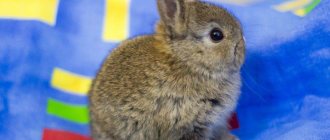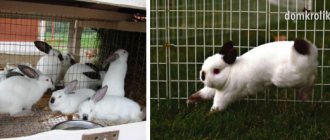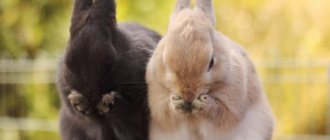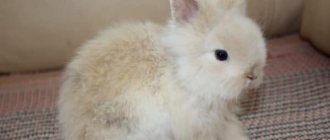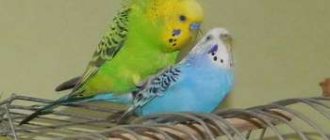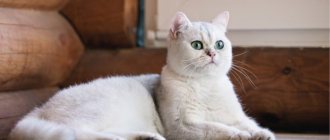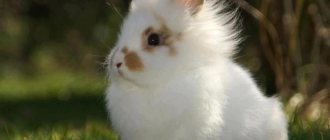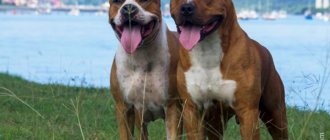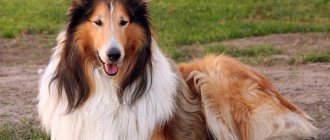Classification
First of all, it is worth emphasizing that all breeds of rabbits are classified according to the following areas, namely:
- The meat is a skin-on variety. Animals of this breed are raised to obtain excellent fur and dietary meat, and are rightfully considered to be the best eared animals. Such rabbits belong to the broiler species and are endowed with a special body structure, due to which muscle mass is gained in the shortest possible time.
- Skin breed of rabbits. This rabbit variety is grown on many farms to produce luxurious fur. Often the fur of this breed of rabbit imitates the skins of chinchillas, lynxes and even squirrels.
- Downy breed. This breed has long hair, which is used to produce high-quality thread for yarn.
- And the last variety is outbred rabbits, which most often grow in villages.
As a rule, the best breeds of rabbits for breeding for meat are compact-sized individuals that have a very high meat yield, over 60%. The taste of this product is also excellent, and there is no excess fat on the meat.
Breeds of meat rabbits are very prolific. In the overwhelming majority, one female rabbit's litter contains from 8 to 11 rabbits. Such animals grow quickly and, as a rule, already at two months of age they weigh over 2 kg. And by five months, a male rabbit can weigh up to 5 kg.
All animals are meat breeds, early ripening. Typically, this species is ready to mate at 5 months.
As for the situation at home, if everything is organized correctly, the animals do not get sick and can live in any region of the country.
There are several types of rabbits:
- meat;
- fur;
- meat-skin;
- dwarf.
Rabbits of meat breeds quickly gain weight and when they reach six months of age they can be used for meat. Fur breeds have a thick, soft coat. Mixed species are the most popular among breeders, because their breeding makes it possible to obtain both meat products and sell skins profitably.
Ornamental animals are bred for pleasure as pets. Dwarf animals with long fur are bred in apartment conditions to obtain thread for knitting.
When breeding fluffies, you need to take into account the climatic conditions of the region and select representatives that do not require special care. Which breed of rabbit is best suited for breeding in the Russian climate?
We suggest considering the most popular breeds in order to have an idea about their content.
Tips for keeping and breeding meat breeds
Meat breeds of rabbits (in comparison)
At first glance, it may seem that breeding rabbits is a very troublesome and time-consuming process. If you follow the basic rules of their content, the work brings good results. A novice rabbit breeder should familiarize himself with professional literature in advance and follow the rules to help avoid typical beginner mistakes:
- It is preferable to place cages outdoors rather than indoors. To do this, you need to choose a place on a hill away from prying eyes.
- The most suitable material for a cage is wood. The inside of such a structure should be covered with iron at the corners, otherwise the rabbit will gnaw a hole. The floors of the cage are made double: a grate is placed on top, and a tray is made below. This simplifies the cleaning process.
- Do not place cages in drafts. This leads to the death of young animals and even adults.
- Provide free access to food, as it can eat up to 80 times a day. The diet should include hay, vegetables, green feed and mixed feed.
- The optimal room temperature for keeping rabbits is +10 - +20 degrees with a humidity of 60 - 70%.
- The longer the rabbits are with the female rabbit after giving birth, the higher the likelihood of their survival.
Peculiarities of breeding rabbits when breeding for meat
Differences and advantages of albinos
When deciding which breed will be more economical to breed, you should turn your attention to albino rabbits. There are several varieties of white rabbits. Among them are Butterfly, White Giant, Pannon, New Zealand. Albinos have a calm, balanced character.
Albino Rabbit
Rabbits are not aggressive at all, so they do not waste their energy on conflicts within the species. Accordingly, much less feed will be needed to maintain vital energy. Fat buildup occurs noticeably quickly. All large livestock farms prefer albinos for breeding for sale.
Before starting their own business, breeders often doubt which type of rabbits to purchase. What advantages do meat rabbits have?
- Meat rabbits are usually very large. The weight of an adult animal ranges from 5 to 8 kg. There are also record holders up to 12 kg! Their large mass makes them profitable for sale.
- The young grow quickly. Meat breeds are bred in such a way that the rabbits actively gain weight, otherwise their breeding will not be advisable.
- Early slaughter allows you to save on feeding. Individuals are usually slaughtered for meat at 3 months of age. By this time they have reached normal size, but their meat has not yet begun to coarse; it is tender, juicy, and sweetish in taste. Although taste may differ between breeds.
- The fertility of such animals is very high. The female gives birth to 6 to 12 cubs per litter.
- Puberty occurs in different cases from 4-6 months after birth.
- Their paws are usually furry, making it easy to keep the animals in cages.
As for unpretentiousness, it all depends on the breed. There are those that are very easy to maintain, others do not “be capricious” only in a suitable climate. The rest require painstaking care, but this is beneficial for the breeder - such species are usually the most productive.
Features of large species
It may seem that the best breeds for breeding are large breeds, from which you can get a lot of rabbit meat. Giants amaze with their impressive size, but such giants have many disadvantages. When keeping long-eared animals, increased volumes of feed will be required according to the needs of the animals, large spacious cages, and a lot of bedding. In addition, large rabbits are susceptible to obesity and limb deformities.
Although large-bred eared animals have many negative aspects, their cultivation is common among farmers. They are popular for their peaceful disposition, resistance to viral diseases that are found among rabbits, as well as tasty meat and luxurious large skins.
Flanders
The first representative from our list is Flandre. It does not take root well in the territories of the post-Soviet space. To maintain it, it is necessary to build special heated cages, which is very expensive. At the same time, Flanders is used for the selection of many meat breeds.
Flandre is a real giant compared to his relatives. Its body reaches 70 cm in length, and its body weight reaches 10 kg. All over the world, this breed is valued for its tender, tasty meat and thick fur, which resembles the structure of kangaroo fur.
Despite the high production rates, long-eared hulks require special care. Rabbit houses should be large. Representatives of the species consume a lot of food. Female rabbits reach sexual maturity very late, so their births are often accompanied by complications. However, if the farm has a sufficiently warm outbuilding that can be adapted for their maintenance, then problems with breeding the breed should not arise.
Flanders rabbits belong to a subgroup of giants. They are not distinguished by their beautiful appearance; their advantage is their large dimensions. Fluffy plushies have large ears, like burdock leaves, and a massive figure.
Features of keeping meat rabbits
Breeding rabbits includes several simple tasks, if followed, the animals will feel good, reproduce, and gain weight:
- clean and spacious rabbit hutches;
- absence of heat, drafts and high humidity;
- balanced diet.
Sometimes the cage contents are replaced with pits. Such conditions are as close as possible to the natural habitat. But this only applies to breeds that are bred for meat. At the same time, the skins lose their appearance and depreciate in value.
The best meat rabbits
What qualities should the best meat rabbits have? They should have a large mass, gain weight quickly after birth, and have good immunity. Of course, the taste of the meat is also important - the tastier the better. All the breeds listed below have these qualities and are therefore the most popular for breeding around the world.
- Flanders is a breed of rabbit that is very large in size. Bred more than 150 years ago. It is bred for meat and wool, although it belongs to the meat category. At 3 months, rabbits reach 3 kg, and an adult rabbit weighs up to 8 kg. Slaughter yield 55%. Coat color varies, but usually consists of 2-3 shades. Often used in breeding new breeds. In one litter, the female gives birth to 6-12 cubs.
Photos of Flanders rabbits
- The California breed of rabbits can be slaughtered at 3 months, as the individuals reach the required weight. The average weight of the animal is 4-5 kg. The meat is dietary, very tasty, tender, with a thin layer of fat. The advantages of the species include the type of fat of this animal - it is almost completely absorbed by the body. Reproductive age is reached from 4 months. The wool is white with black spots, soft, and can be sold, like meat.
Photo of Californian rabbit breed
- The gray giant was bred in Ukraine. Individuals are very large, weighing 6-7 kg. Body length is up to 60 cm. The coat color is gray (as is clear from the name), but shades may differ. For one mating, the female gives up to 10 rabbits. All with a good immune system, so their survival largely depends on the care of the breeder and the quality of the food. By 3 months they weigh up to 3 kg, an adult rabbit – 7.5 kg. Slaughter yield of meat is 57%. The taste is good, but inferior to the Californian variety.
Photo of the gray giant rabbit
- The gray chinchilla is an interesting meat breed with a very soft coat. Adult rabbits weigh around 5 kg. They are prolific, the survival rate of young animals is good. By 3 months, young animals reach 3-3.5 kg, the meat is very tasty. Coat color can be black, white, dark gray, light gray, bluish gray. Not only the meat is sold, but also the animal’s fur coat.
Photo of the rabbit breed Gray chinchilla
- European silver is an unusual breed that has significantly increased in popularity in recent years. The weight of an adult rabbit is up to 7 kg, females – up to 5 kg. They are unpretentious, which is why they are popular, and have good immunity.
Photo of rabbit breed European Silver
The best meat rabbit breeds have small body sizes and a relatively small head. In addition, this variety has well-developed muscles. It is also worth highlighting that the fur coat of meat rabbits is very high quality and soft. An adult animal weighs on average about 5 kg.
So, the best breeds of meat rabbits.
In order to obtain this breed, breeds such as the Belgian hare and the giant Flanders were crossed. This variety has a cylinder-shaped body, a rounded back and straight powerful legs. The color of the animals is red or white. At three months, the rabbits already reach a weight of 3 kg.
The eared New Zealand breed has a good character. Thus, aggression is not typical for the animals and they are very obedient.
We suggest you familiarize yourself with: Calming products for cats and kittens
This breed has been successful in Europe for the past 40 years. And in order to get this look, it was necessary to cross three breeds of animals at once, such as a chinchilla, a white New Zealand rabbit and a Himalayan long-eared representative. The main color of the variety is white.
But at the same time, from two months old, black spots appear on the skin of the rabbits. As a rule, they appear in the areas of the paws, ears, nose and tail.
The fact is that they can thrive even in poor conditions. The only thing that needs to be provided to the eared ones is good fattening, in which the young animals reach up to 3 kg literally in the first two months of life.
White pannon
And the last species is the White Pannon rabbit. We got such a white giant thanks to crossed breeds, Californian and New Zealander. Pannon differs from its fellows by its small head, strongly protruding ears and luxurious skin.
All of the eared breeds described above are broiler species that have many advantages in growing. Thanks to this, rabbits are in great demand on farms where animals are bred for further sale. Well, in general, to this question: what breeds of rabbits are worth breeding, there is only one answer - choose exactly those varieties from which you will get the maximum profit.
Breeding meat rabbits
Mating occurs only after individuals reach puberty. For reproduction, healthy representatives weighing more than 2 kg are selected. The success of mating depends on the correct determination of the female’s condition.
Readiness has occurred if:
- frequent urination;
- loop swelling;
- aggression;
- raising the tail;
- refusal to eat.
During estrus, they do not bleed; the sexual cycle is of the estrous type. In veterinary medicine it is called sexual hunting. It is constantly changing under the influence of various factors:
- season;
- length of daylight hours;
- air temperature;
- feed.
Soviet chinchilla
Representatives of downy breeds are distinguished by long and thick fur. They are kept by both farmers and amateur rabbit breeders.
The Angora down breed is widespread in Europe. This includes many long-haired species.
The homeland of the main breed is Türkiye. It was from this country that animals were imported in the Middle Ages for sale in European cities. It was very popular among the nobility to keep such rabbits as pets. In adults, the body is shortened and cylindrical in shape. The head is small with short ears.
The white downy breed was obtained by domestic rabbit breeders in the last century through the selection of Angora breeds from Europe.
The animals are quite large, up to 54 centimeters long. Average weight 4 kilograms. The body shape is compact, round. Limbs are short. The ears are small. The fur is up to 15 centimeters long and is elastic (not prone to matting). The female gives birth to up to 7 babies in one litter. The breed is maximally adapted to our climate.
The average body weight of New Zealand representatives reaches 5 kg. The body is muscular and lean. They are distinguished by their pure white color. The head is small in size with erect short ears. The paws, even on the soles, are covered with dense fur.
New Zealand white rabbit
Representatives of the breed gain weight very quickly. By the age of 3 months, rabbits gain 3 kg. Female rabbits give a large litter of up to 12 rabbits. Rabbits have a calm disposition.
The lop-eared sheep is a very popular species in Western Europe. Like the Flanders, the body length can reach 70 cm. Body weight is 7-8 kg. Wool feels like velvet. The body is lean with a well-developed muscular system. A special feature of this species is its hanging ears. This ear structure makes rabbits' hearing much worse. The animals have a calm and affectionate character, which is why they are often bred as pets in apartment conditions.
Fold-eared ram
On our territory you can find several varieties of this species. The color can be not only white, but also blue and black. The average body weight of animals is 4-5 kg. Case length - 51 centimeters.
White fluffy bunny
The fertility of females is average. During one pregnancy, female rabbits can bear about 7 rabbits. Almost all representatives of fur-bearing breeds are distinguished by good adaptation to any climatic conditions. The fur of representatives of the breed is light and elastic.
The Angora rabbit resembles a fluffy ball. Individuals of this species are often adopted for children because of their friendly, playful disposition. Their weight is only 3 kg.
Angora fluffy rabbit
Individuals of this species are not distinguished by early maturity. They gain weight very slowly. A female rabbit brings up to 6 rabbits in one litter. Their coat requires special care. Rabbits need to be cut frequently and need warm, dry cages to keep them.
Individuals of meat-and-skin breeds are especially popular among breeders due to their ease of care and good adaptability. The meat of this breed of rabbit has a special taste. The fur is similar in color to the fur of a silver fox.
Black and brown rabbit
Rabbits gain weight quickly. Their average body weight is 5 kg. During one pregnancy, the female bears about 8 babies.
From the name itself it is clear that the fur is similar in color to that of chinchillas. Animal skins are widely used for the manufacture of fur coats and sheepskin coats, not only as an imitation of chinchilla fur, but also in its pure form.
Soviet chinchilla
The breed is also valued for its high rate of weight gain. By 3 months of age, their weight is 3 kg. A rabbit can produce 8-10 young rabbits in one litter.
Any novice farmer wonders whether it is profitable to raise rabbits at all and what breed is better to have. If you analyze world statistics and trends in the development of rabbit breeding, it becomes clear that large breeds have lost their primacy. Even countries in which they were previously considered a treasure have begun to abandon their breeding because it is not profitable.
Recently, New Zealand and California rabbits have become the most popular. Also, these trends are closely associated with the invention of new breeding technologies and the release of improved universal feeds. Medium-sized rabbits weighing up to 5 kg are characterized by rapid weight gain. By the age of 3 months they can be sent to slaughter. Individuals at this point already weigh 3 kg.
The name of this rabbit has nothing to do with the country in which they were bred. They were received in the USA in 1910. New Zealand Red differs only in its color and is slightly inferior in weight to white. From albinos of this breed, a white New Zealander was bred, which has the best indicators for meat and growth. An adult white New Zealand rabbit reaches a weight of 4.5 kg.
The body structure of the New Zealand rabbit does not have any characteristic features. The body is of medium length in the shape of a cylinder, a relatively small head with straight, erect small ears. The rounded croup has a wide chest, the paws are straight and quite strong.
The fur has a uniform white color, its consistency is thick and dense, the hair is short with a slight shine. The muzzle, paws, tail and ends of the ears sometimes have a dark edging in this breed, which is considered normal and does not pass as a defect. The standard body length for a female rabbit is 49.5 cm, and for a male it is 2 cm less.
A calm disposition and slight sensitivity to sounds allows the New Zealand rabbit not to be scared and avoid unnecessary stress. Good milk production and fertility of females is visible in the offspring, which can be up to 12 rabbits. Females are very caring and the rabbits grow quickly, at the age of 3 months their weight reaches 2.7 kg.
The breed was developed by breeders from two regions, Novosibirsk and Saratov, together with the Research Institute of Fur Farming and Rabbit Breeding. The breed was obtained by crossing and by strictly culling the imported chinchilla and the White Giant rabbit. This breed received official status in 1963 and is valued for its meat and beautiful skins.
The harmonious body structure of the Soviet chinchilla is expressed by its slender and wide body with a small head and small ears standing straight. On the lower part of the abdomen, neck and tail below, the skin is white, in contrast to the whole body of a bluish-gray color. The fur is very smooth with a peculiar shine. The skins of the Soviet chinchilla are very similar in color to the natural fur of the animal of the same name.
An adult individual has an average live weight of about 5 kg, its body length is 57-62 cm, and its chest girth at the shoulder blades reaches 38 cm. Fertility is good, but low, with no more than eight cubs in each litter. High growth rates are noted; after 3 months, the young generation gains weight up to 4 kg. It is characterized by a high slaughter yield of meat from 56 to 63% of the total weight of the rabbit.
White down
In Russia, the breed is represented by several types with different weights and different quality of fluff; there are individuals with black and blue colors. On average, the weight of adult individuals of the White Down breed is four kilograms, the constitution of full-aged animals is strong, the body reaches 55 cm in length. Female rabbits are averagely fertile, capable of producing up to 7 young rabbits per litter.
Angora down
The Angora rabbit, which resembles a fluffy ball in appearance, is also popular as a pet; moreover, it has a friendly and playful character. If you research rabbit breeds online with photos, the adorable animals of this fluffy breed will definitely catch your attention!
We invite you to familiarize yourself with: The initial stages of the development of life on Earth || History of planet Earth, development of life in the initial stages
The weight of adult Angora rabbits is only 3 kg; baby rabbits grow rather slowly - only by the age of six months do they gain a weight of two kilograms. On average, a female rabbit gives birth to about six young rabbits. Disadvantages of Angora rabbits: they need to be clipped regularly and can only be kept in warm, dry, spacious cages.
Downy rabbits
Such rabbits are kept for the purpose of obtaining fluff. Raw materials in the form of meat and skins are secondary. Down is used in knitting and felt factories. The rabbit is considered the most suitable animal for this, since its fur consists of 95% undercoat fluff, and coarser hairs occupy only 5% of the total volume. Russian rabbit breeders breed two types: white and Angora rabbits.
Grooming a downy bunny
Prices for brushes for small animals (kittens, rabbits, guinea pigs)
Brush for small animals (kittens, rabbits, guinea pigs)
as white downy rabbits in Russia. The former are also considered a variety of Angora rabbits, while the latter are distinguished by a powerful skeleton. Both varieties are characterized by unpretentiousness to living conditions, food and temperature changes. An adult rabbit of Kirov selection produces up to 800 g of fluff per year. There are female rabbits that can bring 1 kg of material. Female rabbits of the Kursk selection are less fluffy and bring up to 500 g of fluff, taking into account one mating and litter per year. They are capable of feeding up to 7 rabbits at a time. At the age of two months they are combed for the first time, but not more than twice a week.
White downy bunny
Angora down rabbits have fluff similar to that of the Angora goat. Females and males weigh about 3 kg. Up to 300 g of raw materials are combed from rabbits per year. Such a small amount of raw materials is justified by its high demand and price on the market. Due to its unpretentiousness and easy tolerance to changes in climate temperature, this species is used by breeders to reproduce new breeds.
Angora down rabbit
What other meat breeds exist?
In addition to the best meat breeds, there are also simple, but no less common. Such rabbits of meat breeds may not have a very large body weight or may have some significant disadvantages. But it is much easier to purchase them, since they are cheaper.
- The New Zealand rabbit has a wide distribution. The weight of an adult is 5 kg. Females are usually larger than males. Puberty occurs at 6 months. The female gives birth to up to 12 rabbits per litter. Carcass yield after slaughter is 58%. The coat color is white, the fur is soft, but not of great value.
- The white giant is less popular than the gray one and is often of the meat-fur type. The weight of an adult is 5 kg, the slaughter yield is 58.7%. They are slaughtered at the age of 5 months so that the animals grow stronger and have more fur. At 5 months of age, their weight is 4 kg or slightly more. The female gives birth to up to 8 cubs per litter.
- Risen is a breed of rabbit that is almost a complete copy of Flanders, only of German origin. Adults weigh 5-10 kg, meat yield after slaughter is 55%. The average length of the body is 0.75 cm. Females give up to 12 rabbits per litter, but sometimes there are fewer. The main disadvantage is that reproductive age occurs at 8 months.
What is good about meat rabbit products?
The nutritional properties of rabbit meat are much higher than those of other animals. The most delicious meat will be from young rabbits (pink, dense, lean). Everyone knows the beneficial properties of tender dietary rabbit meat. It contains only muscle tissue (up to 85% of the total weight of the carcass), which contains a lot of iron, B vitamins, minerals (phosphorus, potassium, magnesium), and practically no cholesterol.
Video What breeds of rabbits are best to raise for meat?
The best breeds for breeding
When choosing a breed for breeding, you need to pay attention to the shortcomings and productive characteristics of representatives of the species. Meat breed rabbits can be finicky to keep, require expensive feeding, or have breeding problems. All these points should be clarified before purchasing the first batch.
You can focus on the scale of production. For commercial purposes he usually breeds Californian and New Zealand breeds. Risen, Flanders, White and Gray giants, European silver, Gray chinchilla are usually bred in small private farmsteads.
Depending on the breed, caring for rabbits can be easy or difficult. But as for feeding and breeding, there are general points that all breeders who want to make a business in breeding meat breeds should know about.
To get tasty rabbit meat, it is important to feed the animal properly. In addition to grass, meat rabbits should receive several types of grain, dry bread, vegetables, some fruits, and fresh tree branches (mainly fruit trees). If you don’t have time to combine feed, you can simply purchase high-quality compound feed, but it is expensive, so it is much easier to purchase compound feed and mix it with grain so that it is not so expensive. And give juicy food separately (carrots, beets, dried grass, apples). How to make compound feed for rabbits with your own hands, read this article.
Chalk, vitamins, and mineral supplements must be present in food at all times. But if high-quality feed is used, additional vitamins will not be required, only chalk. It is simply hung on cages so that animals can chew on it if necessary.
In cold weather, water is always given warmed up (not boiled), and in the summer you can give cool water, but most importantly not ice water. It is better to pour it into a nipple drinker; it is much easier for meat rabbits to drink from it, and it needs to be changed less often.
The reproductive age of meat breeds occurs at 4-6 months. The individual selected for mating must weigh at least 2 kg! One female rabbit can give birth 3-5 times per year. There should be up to 8 females per male.
Rabbit on the grass
The first mentions of these domesticated animals are found in written monuments of ancient Roman history. Since then, rabbit breeders have put a lot of effort into creating new breeds.
The purpose of breeding is to obtain meat, fur and fluff. Meat, which has dietary properties, is valued in cooking. Fur is distinguished by good wearability, variety of colors and low cost. Down has many properties superior to the wool of Merino sheep and Angora goats.
The division of rabbits into breeds is very arbitrary. All representatives of this species are used by humans for meat and fur. They differ mainly in appearance.
The following breeds are distinguished:
- Decorative.
- Meat.
- Downy ones.
- Fur:
- with normal hair;
- long-haired.
Meat
Meat breeds of rabbits are attractive for their precocity and unpretentiousness. Most of them are suitable for breeding at home. For their tender and tasty meat they are often called broiler.
California rabbit
Appeared as a result of crossing several European breeds.
Adults have a small head and a relatively short body. The ears are short (up to 11 cm) and stand upright. Nose with a pronounced hump. The eyes are red.
The croup is round and wide - this is where the fleshiest part of the body is located. The limbs are also short. The skeleton is thin and light. The muscles are well developed.
The fur is thick and short. Color white. The nose, ears, paws and tail are brown or black. Average weight is from 4 to 5 kilograms. They gain weight before the age of five months.
Females give birth to an average of 8 babies per litter. The breed is distinguished by its resistance to low and high temperatures. They are bred both in the northern regions and in the arid steppes.
Soviet chinchilla
Bred by crossing two breeds: the domestic White Giant and the French Chinchilla.
In adults, the body is compact with a rounded back. The head is medium in size with erect ears. The chest is wide, with a girth of 37-44 centimeters.
The body reaches a length of 67 to 70 centimeters. Limbs are strong and straight. Average weight 4-5 kilograms. Young individuals reach a weight of 4 kilograms by four months.
The fur is thick with dense undercoat. The color is dark gray with a blue tint.
The fur on the inside of the legs and belly is lighter. A characteristic feature is the uneven color of each guard hair (there is a transition from a dark gray shade at the bottom to silver-white at the top). The guide hairs at the ends are black.
In general, the fur has a moire color that shimmers in the light. Females bring 8 or more babies per litter. The breed is early maturing and hardy, not afraid of cold weather.
Black-brown rabbit
Brought out by crossing three breeds: the White Giant, the Flanders and the Viennese Blue.
The head is massive with long wide ears (up to 18 centimeters long). The chest is wide, with a circumference of 37 centimeters. Body up to 61 centimeters long.
The croup is rounded and fleshy. The limbs are long and thick. The fur is fluffy, with thick, characteristic black-brown hair. The fluff is bluish. The head and back are black.
The sides of the animal are unevenly colored. The average weight of an adult is from 5 to 7 kilograms. Females bring 8 or more babies per litter. The breed is valuable for its original color of skins.
White pannon
White Pannon rabbits are classified as a meat breed and a broiler breed. Thanks to special selection for crossing, this hybrid was first created in Hungary. Breeders took as a basis representatives of the white giant, New Zealand and Californian breeds.
Experts who were involved in breeding young rabbits for meat gave the new breed a fairly high rating.
Its popularity is explained by faster weight gain, meat yield, and its remarkable taste compared to other breeds. The weight of an adult individual reaches 5 kilograms, and slaughter is carried out at the age of three months.
A distinctive feature of the Pannon is a long body with a proportionally folded head, light bones, clearly defined muscles, thin skin, erect ears and fluffy fur.
Due to the skin being too tight, it is quite difficult to lift representatives of this breed into the air while holding onto it.
Rabbits have snow-white fur and red eyes, which make them albinos.
Burgundian
The Burgundy rabbit became known to the world at the beginning of the last century. For the first time, the breed was bred in France in Burgundy, which is where the name comes from.
The conclusion was obtained as a result of mixing such well-known breeds as: New Zealand Red and Californian. On the territory of the Russian Federation, these rabbits appeared only at the end of the 20th century, in 1991, in fact, 80 years after breeding.
The characteristic features of the appearance are the shade of the fur, which is thick. In addition, it is important to pay attention to the light blue color scheme, like pollination, giving off a red or scarlet tint.
This is the color that is characteristic of a purebred breed; the absence of a reddish tint means that it is not a “pure” individual. The color is distributed evenly throughout the entire hairline, without lightening or spots - another sign of a purebred Burgundy rabbit.
With proper care, an adult can produce about 50 rabbits per year, which, by the way, is about 2 centners of tasty meat.
As for the skins, they are not exclusive and are not very profitable in terms of processing, but for household use they may well be suitable for sewing hats or making other custom-made products that do not require high quality fur.
Black Fire Rabbit
A skin breed bred in England. There is not much meat from it, it is a by-product. And the live weight of the animal is 1.8 - 2.7 kg. But the original skin is used for sewing accessories and clothing.
The standard of the American Rabbit Breeders Association provides 4 color options for this breed: black, chocolate, lilac, blue.
Redhead is present in all color options.
Due to the original coloring and docile nature of this rabbit, today they are often bred as pets rather than as a skin breed.
Silver
Bred using the selection of purebred representatives of the Champagne breed. The domestic breed is distinguished by its fertility and early maturity.
The head of adults is medium in size with small erect ears. Chest circumference 36 centimeters. Body length 57 centimeters. The limbs are strong and widely set. Weight from 4 to 6 kilograms.
The skin is well pubescent, light or dark silver in color. The intensity of color depends on the ratio of black (guide) and guard (black and white) hairs.
The animals become lighter by the age of four months. The breed is resistant to weather conditions in the middle zone.
Voile silver
Rabbits with original coloring were bred by livestock specialists of the Republic of Tatarstan. The hairline resembles the coat of a silver-black fox. This is due to the unequal color of the guide, guard and down hairs.
The special characteristics of the breed are as follows:
- rabbits are born black, and with the second moult appears
- silver color;
- the blue down is evenly distributed;
- The average weight of an adult rabbit is about 5 kg;
- precocity;
- high fertility and good maternal instinct;
- excellent acclimatization and adaptability.
The skins of veil-silver rabbits are used in their natural form. At slaughter, the meat yield is up to 58%.
Risen
Giant rabbits from Belgium were famous and bred throughout Europe, but at the end of the 19th century, breeders in Germany were able to talk about the appearance of their own giant rabbits.
This is how the Rizen rabbit breed was created, which means “giant”. These are the largest animals existing today.
The weight of a male can reach 12 kg or more, and not only the meat is valued, but also the thick short fur of different colors. Pedigree animals have large ears, wide paws and a massive body. Due to their weight, Risen rabbits are quite clumsy, but good-natured and intelligent.
White New Zealand
The history of the New Zealand white rabbit breed goes back more than a hundred years. To obtain pure white meat animals, representatives of the White Giants and local albino animals were used.
The breed, even with a relatively small weight of animals, growing up to only 4.5 kg, still retains its popularity today due to the high quality of lean meat, unpretentiousness, early development and a large number of rabbits in litters.
The breed characteristics of the white New Zealand rabbit include: snow-white fur without the slightest hint of spots, perfect bite, wide paws and back, silver undercoat and red eyes.
The largest
Experienced breeders prefer to breed large rabbit breeds. The animals are distinguished by their large weight and endurance. At the same time, they require special conditions of detention. Their average weight is 5-10 kilograms. Raised for meat and skins.
The Belgian Flanders is the ancestor of domestic large breeds. The exact origin is unknown. There is an opinion that it was bred by crossing the Flemish breed with the Argentine (or Patagonian). It is the most widespread breed around the world.
The photographs show the Belgian Flanders breed
It is distinguished by a large massive head and long wide ears. The body is elongated, the ears are erect. The length of the ears is up to 25 centimeters, with a black border visible along the edges. The head is large with characteristic rounded cheeks. The chest is wide, with a girth of 35-45 centimeters. The back between the shoulder blades and hips has a concave shape. The length of an adult is up to 65 centimeters.
Weight from 6 to 10 or more kilograms. The body is covered with thick and long hair (up to 3.5 cm). Color: dark gray, black, blue or silver, white, sand, gray-red. The female gives birth to 8-15 babies. The animal is calm and intelligent, not aggressive towards members of its species or humans.
The gray giant was bred in Ukraine. The Flemish breed and outbred animals were crossed. The resulting individuals are distinguished by their resistance to the local climate.
In the photographs above is the breed of rabbits Gray Giant
https://www.youtube.com/watch?v=bF1j7y1SIUY
The head is elongated with straight, fleshy ears. The chest is wide, with a circumference of 35-40 centimeters. Body length 55-66 centimeters. The croup is wide and rounded. The limbs are long. The weight of an adult is 4-7 kilograms. The coat is medium length, sparse. The color is gray (hare) with shades of red or black. The female gives birth to an average of 8 babies per litter. The breed tolerates being kept in small cages and low air temperatures well.
The white giant comes from Belgium. The domestic, more climate-resistant breed was developed by crossing the Belgian with the Soviet chinchilla and the Gray Giant. A typical albino with reddish eyes and snowy white fur.
Photos of White Giant rabbits
The head is rounded with relatively small straight ears (up to 16 cm). The chest is wide, with a girth of 37-40 centimeters. Body length 60 centimeters. The croup is rounded. The limbs are long and widely set. The average weight of an adult is 5-6 kilograms. The coat is very thick with a dense undercoat. In one litter, a female gives birth to 7-9 babies. The breed does not tolerate being kept in cramped cages. It is grown mainly for its skins.
In the photographs above is the breed of rabbits Gray Giant
Characteristics of meat breeds
There are about three dozen meat breeds of lagomorphs. Due to their characteristics, the following are especially in demand:
- New Zealand;
- gray giant;
- Soviet chinchilla;
- Flanders;
- European silver.
Let's look at each of the breeds in more detail.
Californian
In terms of weight, rabbits belong to the middle group among large animals of this direction. Individuals are quite easy to keep. The coat color of the animals is white; in addition to the snow-white coat there are black spots. This applies to the ears, nose, tail and paws.
Animals are notable for the red color of their pupils. Rabbits have a developed physique and a small head. In addition to meat, this breed uses skins for sale. The meat is characterized by a small fat layer, the share of the net product yield per individual is 75%.
New Zealand
The breed was bred in America; by the age of 5-6 months the animals already weigh more than 5 kilograms. The productivity of keeping such individuals is quite high; females are capable of giving birth to 7-8 cubs at once in one litter. The meat of these rabbits bred in America is highly valued, and therefore is distinguished by its high cost. Individuals look quite stocky and fluffed in appearance, with a well-set sacrolumbar region. The color of the skin is white, the hair is short. The meat yield per animal is 78%. Female rabbits can give birth to up to 10 babies in one litter.
Gray giant
The body length of the gray giant can reach 60-70 centimeters, chest girth – 38-40 centimeters. The head and body of rabbits of this color are quite large, and their ears are erect. Animals can have several coat colors: iron gray, gray and dark gray. Rabbits and female rabbits are distinguished by their high immunity and resistance to most ailments. Individuals rapidly gain kilograms, so that by the age of 2 months, with the right diet, they can reach a weight of 2-3 kilograms.
Soviet chinchilla
The breed is characterized by an average weight, adults gain up to 6-7 kilograms. There are also small animals whose weight does not exceed 4 kilograms. Meat is positioned as a product with high organoleptic characteristics. The meat yield from Soviet chinchillas will be about 56%. The animals have a gray skin color, the shade can vary from dark to light. The fur is of good quality, so it is quite in demand on the market.
The breed requires special attention from the breeder in terms of diet, since low-quality food can lead to the death of animals.
Flanders
Animals of the Flanders breed are also called broilers, since it is these lagomorphs that stand out for their large weight. As a rule, an adult weighs about 10 kilograms, but there are record holders whose weight exceeds the established standards by 2 times. These animals are distinguished from others by their erect ears, the length of which can be 20 centimeters. Rabbits are massive, with a wide chest, dense fur and a large head.
The color of animals can be of different colors: agouti, light or dark gray, silver, black, sand. Flandre is not known for its rapid maturation compared to others, which is why it is not recommended to kill him before six months of age. Female rabbits have a high level of milk production, usually up to 10 babies are born in one litter.
European silver
A breed whose homeland is considered to be France. But despite this, the animals adapt well to the peculiarities of the domestic climate. Rabbits gain weight quite actively and are immune to many diseases. As breeding experience shows, individuals eat little, which is the main advantage for breeders. Adult rabbits of this breed gain weight up to 5-7 kilograms. The meat has a minimal amount of fiber.
Butterfly
The unique color made this species popular among fur connoisseurs. Contrasting spots reminiscent of butterfly wings stand out clearly against a plain background. According to the color scheme of the spots, the following varieties are distinguished:
- blue;
- black;
- grey;
- yellow.
Rabbit Butterfly
The species adapts perfectly to the climatic conditions of our territories. In addition to excellent wool, individuals have excellent meat, which is highly valued among gourmets. Females of this species are very fertile.
How to choose the right breed of rabbit?
Rabbits of any breed are a source of tasty and dietary meat. The only exceptions are decorative animals. But to get maximum profit, you should breed rabbits that are bred specifically for meat, and not those that are bred for skins. There are a large number of meat-skin animals, and even skin-producing animals. And you won’t be able to get meat from them. There are several factors to consider when choosing meat rabbits:
- The quality of the meat obtained. Almost every rabbit's meat has a pleasant taste and is also good for health. But there are breeds that are good because their meat is more tasty and tender. Such carcasses are sold at a high cost.
- Animal sizes. There are some breeds that are truly large in size. These giants reach a mass of 6-7 kilograms; as a result, they become large at slaughter. Sometimes such rabbits are considered not meat, but meat-skin rabbits.
- Speed of weight gain. Depending on how quickly rabbits gain slaughter weight, the cost of caring for them to achieve productivity also depends. And the speed of realization of the animal depends on this parameter. Those animals that slowly gain weight do not make any profit at all.
- Disease resistance. There are a huge number of infectious and fungal diseases that can cause the death of up to 80-90% of the entire rabbit population. Therefore, it is better to choose those varieties that are more resistant to diseases.
- Precocity. The faster the rabbits reproduce, the faster they will produce offspring, and accordingly, the profit will become greater. For rabbits with meat beards, this parameter is very important. Despite the fact that animals reproduce quickly, there are species that reproduce faster than others.
In addition to these factors, you should pay attention to which animals will do best in a given area. You should also pay attention to the breeds of rabbits, since some varieties are unavailable or extremely rare in some regions, so out of desperation you have to purchase animals that are available.
It is very important before buying rabbits to consult with experienced breeders who can recommend a worthwhile variety.
Homemade
Representatives of domestic breeds of rabbits can be kept both outdoors (for meat and fur) and at home - in a special cage. Animals can freeze outside in cool weather. The home cage is lined with sawdust or straw, which is changed regularly. Animals are not allowed to walk around the apartment!
We invite you to familiarize yourself with: The right toys for cats with your own hands at home
Butterfly. This English breed was originally considered a decorative breed. Later representatives of the breed were crossed with Flanders and Viennese Blues. Hybrids are grown for their skins.
Adults have a compact body with a small head and short erect ears. Body length 56-58 centimeters. The chest and back are wide. The limbs are long. The skeleton is strong with well-developed muscles. The fur is short and thick. The main color of the skin is white. A characteristic feature is the presence of black-brown spots.
The Viennese Blue is the result of crossing the Flanders and Moravian Blue breeds. This hybrid can be classified as an endangered species.
Photo - Vienna Blue
The body is folded proportionally. The head is neat with straight ears rounded at the ends. The back is wide. The body is medium in size with a rounded croup. Limbs are straight and strong. The fur is thick, uniformly colored bluish-blue. The inner surface of the ears is light. Average weight 4.5 kilograms. The female gives birth to up to 9 babies in one litter. The breed is valued for its high fluff content - the skin is extremely delicate and soft.
The main difference is the long ears that hang down freely. The length of such unusual ears is from 18 to 72 centimeters. The size of adult individuals can be either miniature or large. The body is compact, the limbs are short. The color depends on the specific species. There are black, blue, spotted, red and other colors.
The ermine breed comes from England. It was brought to our country at the beginning of the last century.
The body of adults is short (up to 52 centimeters). The head is round with erect ears. Chest circumference 29-34 centimeters. The back is arched, the croup is rounded. Limbs are straight. The fur is thick. The main body color is white. The tip of the nose, paws, ears and tail are black or brown. Average weight is from 3 to 4 kilograms.
The Soviet Marder was created by crossing two breeds: Ermine and Chinchilla.
Body length in adults is up to 50 centimeters. The chest is wide, measuring 31 centimeters. The limbs are dense and relatively short. The head is small with erect ears. The fur is short and thick. Body color is brownish. The paws, muzzle, back and tail are always of a darker shade. Average weight is from 3 to 4.2 kilograms. The female gives birth to 7 babies per litter. The fur of adult animals has a high fluff content.
The Rex breed appeared as a result of a natural mutation of Flandres.
The body of adults is compact with a rounded croup. The head is small. A characteristic difference is an underdeveloped mustache. They are much shorter than any other breed. The ears are fleshy and erect. Limbs of medium length. Weight from 3 to 5 kilograms. The fur is thick and dense, but very short (plush). Curly hairs are found only on the nape and belly.
Breed - Butterfly
Diseases of meat breeds and their prevention
Rabbits are susceptible to infectious and non-infectious diseases. The first can be avoided if all individuals are vaccinated on time. These include.
| A hybrid obtained by crossing Flanders and Moravian Blue. The body is round, 60 cm, the head is medium with erect ears, the paws are not long. Weight 4-5 kg. The coat is long, shiny, with a blue tint. | ||
| Black-brown | ||
| A cross between the White Giant, Flandre, and Vienna Blue. The body is elongated, 60 cm, the head is proportional to it, the ears are long, the legs are short. Weight 5-7 kg. The fur is similar to a black and brown fox. | ||
| Butterfly | ||
| To obtain high-quality skins, we combined Flandre and Vienna Blue. The body is compact, 55-60 cm, with a small head and erect ears, medium limbs. Weight 4-6 kg. The fur is thick and short. Unique color - charcoal symmetrical pattern on a snowy background, fur is highly valued. | ||
| Disease | Description | Treatment |
| Cysticercosis | Cestode larvae cause liver disease. Transmitted through dogs. | Granulated food is used and deworming is carried out. If man's best friends live on a farm, they are dewormed quarterly as a preventative measure. |
| Listeriosis | Pathogenic bacteria Listeria infects the animal. Carriers are insects or mice. Basically, pregnant rabbits are susceptible to the disease. | Infected individuals are slaughtered, the carcass is burned or buried deep in the ground. |
| Coccidiosis | Infection of the gastrointestinal tract, focal in nature, pathogens are single-celled parasites of Eimeria. Enters through food and water. | The rabbitry is sanitized and preparations with iodine are introduced into the diet. |
| Pasteurellosis | A respiratory tract disease caused by the pasteurella bacillus. They are spread by birds and rodents. | Antibiotics in combination with sulfonamides. |
| Myxomatosis | A contagious disease, the causative agent is a DNA virus. The body becomes covered with ulcers. | There is no treatment. The rabbit is killed and the feces are buried deep. A person's clothes are burned. |
| RVHD (rabbit viral hemorrhagic disease) | Highly contagious, caused by an RNA virus (caliciviruses), damage to organs by hemorrhagic diathesis. | In the early stages, serum is administered to prevent the spread of the disease. Sick rabbits are slaughtered and the carcasses are burned. Buried in the ground. All equipment and all locations are carefully processed. |
Non-infectious diseases include poisoning and pneumonia.
In the first case, the animal is weakened, there is vomiting and diarrhea. For treatment, provide plenty of drink, a decoction of oats or rice. Choose proper nutrition. It can be caused by poisonous plant juices or poor-quality food.
In the second case, the conditions of detention are changed: high humidity, drafts and sudden changes in temperature and pressure are avoided. Symptoms: mucus from the nose, wheezing, fever, refusal to eat. Treat with antibiotics and drink plenty of fluids.
On farms, animals are bred for different purposes. As for rabbits, they are raised, as a rule, for the purpose of obtaining fur or meat in the future. In the latter case, there are a number of rabbit breeds, the breeding of which is advisable for the subsequent sale of meat carcasses.
All about feeding
When deciding which breed is best to choose for breeding, it is recommended to pay attention to rabbits with an average weight. As for saving on feed, it all depends on the feed itself. For example, in Europe, experienced rabbit breeders and large farms have long switched to pelleted feed. They are balanced and can provide rabbits with all the essential minerals and vitamins for optimal growth and development.
Apart from purchasing pelleted food, there are no additional costs required. The only thing a rabbit's body still needs is a sufficient amount of water. With such a diet, it turned out that it is most profitable to breed rabbits with average body weight. Their fertility is quite high, and the young gain weight very quickly.
Among domestic rabbit breeders, medium-sized rabbits of the following breeds are quite popular:
- Butterfly;
- Viennese blue;
- Californian;
- New Zealand red and white.
In addition to active weight gain, individuals of these species are distinguished by early maturity and high sexual activity. The downtime interval for such individuals is much shorter than for large-sized meat varieties. Females and male Giants reach sexual maturity 1.5 months later than medium-sized representatives. The fur of medium-sized individuals also differs in quality for the better.
To obtain the highest quality meat, rabbits must be kept on a diet. But keep in mind that a diet does not mean feeding only grass. Raising rabbits for meat includes feeding the following products:
- the big-eared menu should include special broiler feed for rabbits;
- You should definitely stock up on quality grain;
- Potatoes, cabbage leaves, carrots and beets will help enrich the long-eared diet;
- be sure to add vitamin supplements that will strengthen the animals’ immunity;
- add some meat and bone meal and calcium to your rabbits' food;
- do not forget about the benefits of fresh, juicy grass and hay, which should always be in the feeder.
When preparing mash for animals, do not forget to add a little salt. Table salt is an essential and necessary mineral.
With the onset of summer, rabbits are given fresh grass daily in moderate quantities. And as winter approaches, it’s worth stocking up on fragrant meadow hay. Such products will serve as a good source of fiber and a whole arsenal of vitamins.
Separately, it is worth highlighting such a point in growing large broiler breeds as milk of increased nutritional value. In order for young animals to gain muscle mass more intensively, the female should be switched to a so-called concentrated diet several weeks before lambing.
Well, the last thing a novice livestock breeder should focus on is water. It should always be in drinking bowls, fresh and clean.
By following simple feeding rules, you are sure to get a healthy breed of rabbits with excellent characteristics that grow quickly and gain muscle mass well.
Basics of an optimal diet for feeding meat rabbits
From birth, the female rabbit feeds her offspring with milk for 2 months. Then they are planted separately and transferred to an adult diet:
- grain crops (oats, barley, corn, legumes);
- root vegetables (carrots, beets, potatoes);
- fresh grass, hay;
- minerals and vitamins (meat and bone meal, fish);
- salt;
- substances saturated with protein (bran, cake);
- tree bark and branches.
Rabbit farms are equipped with special feeders and hay barns. Access to food and water must be constant. Wet food and fresh vegetables are given daily; after feeding, the remains are cleaned out. Such measures prevent souring and fermentation of products, the consumption of which can cause rabbits to get sick or poisoned.
The daily portion of an adult rabbit is in grams:
- feed - 60-80;
- root vegetables - 200;
- fresh grass - 700;
- hay - 200.
In addition, the diet must contain vitamins and minerals. They are contained in mixed feed; sometimes breeders buy ready-made complexes.
Decorative
Typically, breeds of decorative rabbits mean representatives of dwarf species, weighing from 0.5 to 2 kilograms. Such animals are placed in houses or apartments and kept as pets.
The length and color of rabbit fur depends on the breed. The color can be very diverse: chestnut, black, red, white, blue. For each individual species, varieties of animals differing in color are specially bred.
Here are examples of the most prominent representatives of dwarf breeds.
Photo - Lion's head. The average price is 1500 rubles.
Photo - Japanese dwarf. Price from 3000 to 5000 rubles.
Photo - Dwarf moth. Price from 2000 to 4000 rubles.
Photo - Minilop. One of the most difficult species to breed. Cost from 5000 rubles.
A novice breeder who decides to devote himself to rabbit breeding always asks the question: which breed to choose? Friends, we present to your attention a unique catalog for the RuNet with selection according to parameters. On this page you can select a breed by the average weight of an adult, by the number of rabbits per birth, by the number of views - find out which breeds are in greatest demand. To read about the selected breed in more detail, see photos and videos, just follow the link (name).
You can also use the interactive sortable table (opens in a new window).
Read more articles on rabbit breeding here.
Downy
Representatives of downy breeds are distinguished by long and thick fur. They are kept by both farmers and amateur rabbit breeders.
Angora down
Widely distributed in Europe. This includes many long-haired species.
The homeland of the main breed is Türkiye. It was from this country that animals were imported in the Middle Ages for sale in European cities. It was very popular among the nobility to keep such rabbits as pets.
In adults, the body is shortened and cylindrical in shape. The head is small with short ears. Average weight 3 kilograms. The color is the most varied.
The predominant colors are beige, gray and white. The fur is thick and very long (up to 25 centimeters). It is combed or cut. Haircuts are done once every three months. From one animal they get up to 200 grams of valuable fluff.
White down
It was obtained by domestic rabbit breeders in the last century through the selection of Angora breeds from Europe.
The animals are quite large, up to 54 centimeters long. Average weight 4 kilograms. The body shape is compact, round. Limbs are short. The ears are small.
The fur is up to 15 centimeters long and is elastic (not prone to matting). The female gives birth to up to 7 babies in one litter. The breed is maximally adapted to our climate.
Arctic foxes
The breed is the oldest among fur-bearing animals and is well known throughout the country. Rabbits are gray or dark gray with a live weight of up to 3 kg. Their down is elastic, of medium density, with a small amount of guard hair. One adult individual produces up to 200 grams of product per year.
Advantages of the breed:
- high fertility of females;
- low mortality of young animals;
- unpretentiousness in food;
- high immunity.
Arctic fox rabbits are most often kept in cages, which require careful care to deteriorate the quality of the fluff.
Trends in rabbit breeding in the Russian Federation
Despite the fact that throughout the world, mostly medium-sized individuals are very highly valued and widespread, accelerated fish remain in demand in Russia. For our breeders, purchasing granulated feed is simply not affordable. It is much cheaper to feed animals grass, which is very easy to obtain in the summer and store for the winter. Also, branches and grain waste are used to feed rabbits, of which there is always enough in private households.
One of the leading rabbit breeders, Mikhailov, proposed a new approach for optimal productive breeding. His system is based on the study of the basic needs of rabbits and aims to produce large-sized meat animals. He proposed keeping the Giants in an open manner on a special semi-automated farm. Over time, his methods were improved.
Feeding
When industrially breeding meat rabbits, hay and special complete feed with a high protein content are used as the basis for animal nutrition, while providing free access to food and water.
At home, rabbits' diet is more varied. In the summer, they are given fresh grass: dandelion, nettle, plantain, alfalfa. In winter - hay, silage and grain (barley, oats, rye) in combination with mixed feed. Vegetables used include cabbage, fodder or sugar beets, carrots, potatoes (boiled or freshly peeled), and mineral and vitamin supplements are added if necessary.
A nutritious diet ensures animal health and rapid weight gain
Despite the fact that high-protein feeds can significantly increase the rate of weight gain due to an increase in muscle mass, it is not recommended to switch rabbits exclusively to such a diet and use only grain mixtures, since there are known cases of the extinction of entire populations.
Approximate daily ration for a fattening rabbit:
- grass – 700 g;
- feed or grain mixtures – 60-80 g;
- fresh vegetables, fruits – 150-200 g;
- hay – 150-200 g.
In the winter season, when there is no fresh grass, it is necessary to increase the amount of hay, vegetables and concentrates; you can add high-quality silage to the diet. Branch food – “vitamin brooms” – will be an excellent addition to daily nutrition.
Rabbits are mother-fed for about two months.
To increase the speed and quality of fattening, meat rabbits are kept with a nursing mother for as long as possible. The offspring are deposited at the age of 50-70 days, while lactation in the female can occur almost simultaneously with the next pregnancy.
